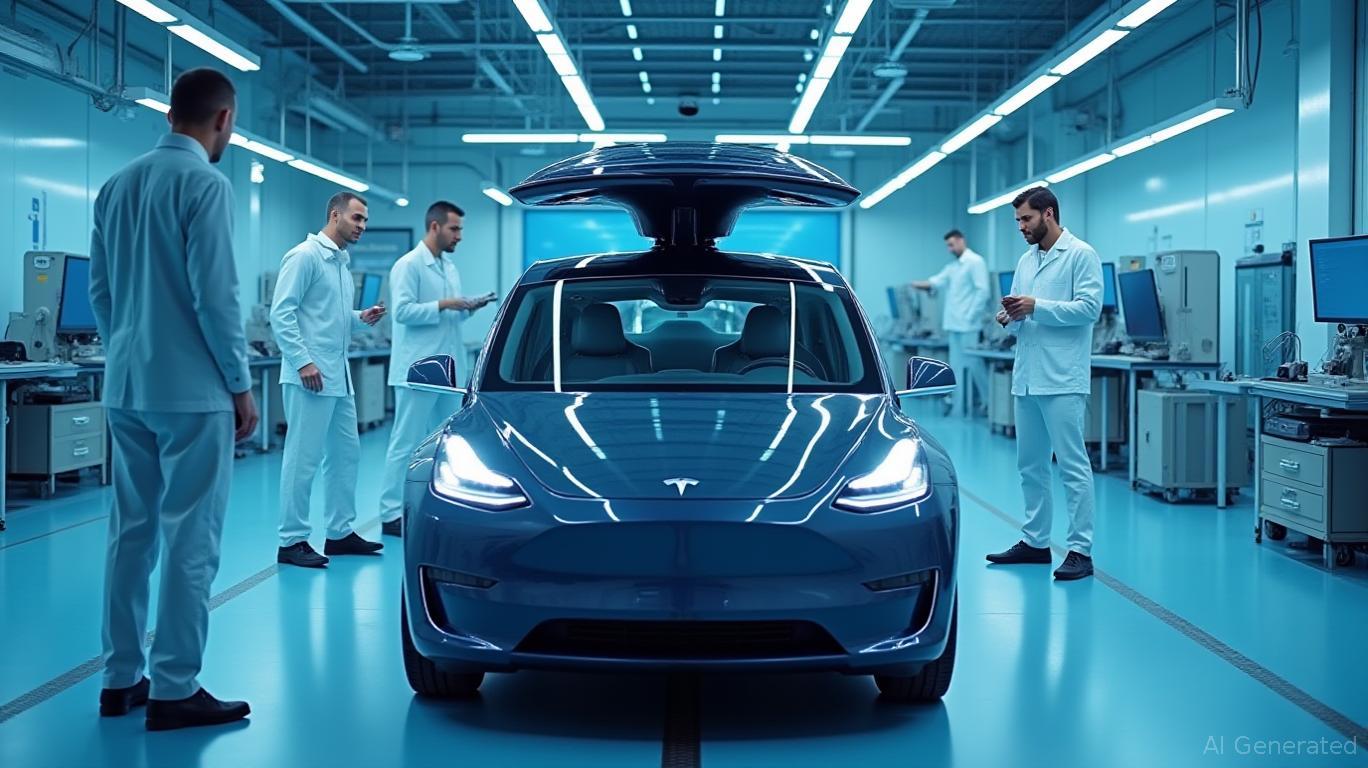Tesla's Robotaxi Launch: Navigating Expectations and Valuation Realities
The clock is ticking for Tesla's June 12 Robotaxi launch—a moment that could redefine its narrative as either a visionary pioneer or a overvalued gamble. While Wall Street's bulls see this as a catalyst for a “golden age of autonomous growth,” skeptics argue the hype far outpaces the fundamentals. With delivery numbers faltering, execution risks mounting, and valuation metrics straining credibility, the path forward is fraught with uncertainty. Let's dissect the gap between market euphoria and the hard data shaping Tesla's reality.
The Bulls' Case: Autonomous Dominance or Overreach?
Wedbush's Dan Ives has staked his reputation on Tesla's FSD (Full Self-Driving) technology as a “game-changer,” citing its camera-only approach as a cost and scalability advantage over LiDAR-dependent rivals like Waymo. The June Robotaxi pilot in Austin, he argues, is the first step toward a global autonomous fleet that could command $1 trillion in annual revenue by 2030. Ives' $500 price target hinges on Tesla's ability to monetize FSD through subscription models, robotic taxis, and software sales—all predicated on flawless execution of its AI vision.
But here's the rub: Tesla's FSD still hasn't achieved Level 4 autonomy, and its Q1 2025 delivery numbers—the lowest since 2022—reflect a company buckling under production bottlenecks.

Bear Case: Valuation at Risk, Risks in Plain Sight
Morgan Stanley's Adam Jonas warns investors to “keep expectations well contained” for the Robotaxi launch. His analysis identifies three critical execution hurdles:
1. Technical Feasibility: FSD's repeated missed deadlines (e.g., the abandoned 2020 “Level 5 autonomy” target) cast doubt on Tesla's ability to deliver a robust autonomous system.
2. Regulatory Scrutiny: The NHTSA's probe into FSD's performance in low-visibility conditions could delay deployment and force costly revisions.
3. Competitive Threats: Waymo and Cruise are nearing commercialization, while Tesla's 18% gross margins (down from 25% in 2022) signal margin pressure from price cuts and rising R&D costs.
The valuation math is equally alarming. Tesla's P/E ratio of 188x for 2025—compared to an industry average of 20x—assumes flawless execution of its AI moonshot. Yet Q1 results showed net income plummeted 90% to $409 million, while deliveries fell 13% YoY.
Key Metrics Undermining the Bull Narrative
- Delivery Declines: Tesla's Q1 2025 deliveries of 336,681 units marked a 50,000-unit drop from 2024, with production halts for Model Y upgrades exacerbating the slump. Even Cybertruck sales (12,881 units) failed to offset losses.
- FSD Penetration Uncertainty: While FSD's “Supervised” mode launched in China, its revenue contribution remains opaque. Analysts estimate deferred FSD revenue artificially inflated Q1 margins, but the lack of transparency on software sales clouds long-term profitability.
- Geopolitical and Reputational Risks: Musk's political entanglements—sparking investor lawsuits and brand boycotts—have eroded Tesla's market share in Europe (down to 9.3% from 17.9% in 2024) and China.
The Data Gap: Why the Market Might Be Ahead of the Story
The disconnect between Tesla's valuation and its fundamentals is stark. Consider:
- Valuation vs. Reality: A $188 P/E implies
- Margin Pressures: Even with energy storage growth (up 67% YoY), automotive revenue fell 9% as price cuts and lower deliveries outweighed FSD's incremental gains.
- Operational Hurdles: The Robotaxi's success hinges on proving FSD's reliability in mixed traffic—a leap from current “Supervised” testing.
The Case for Caution: Wait for Proof, Not Promises
Investors are being asked to bet on a future where Tesla's autonomous fleet generates outsized returns. But until concrete metrics emerge—such as:
- FSD's penetration rate post-China launch (currently unknown),
- Robotaxi pilot data (miles driven, cost per ride),
- Gross margin stability beyond deferred revenue boosts—
the risks outweigh the rewards.
Conclusion: The Road to Robotaxis is Paved with Uncertainty
Tesla's Robotaxi launch is a pivotal moment, but it's a leap of faith, not a sure thing. While bulls bet on Musk's vision, bears highlight execution gaps, regulatory hurdles, and a P/E ratio detached from earnings reality. For now, investors are better served waiting for tangible progress—operational clarity, margin resilience, and FSD's monetization proof—before doubling down. The market may be pricing in perfection; the fundamentals suggest patience is the smarter bet.
Final verdict: Tesla's autonomous future is compelling, but the path is littered with risks. Wait for data, not headlines.

Comments
No comments yet